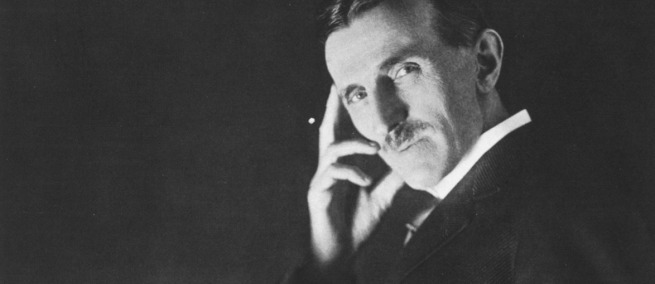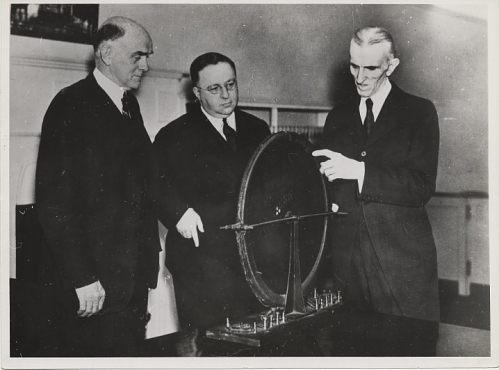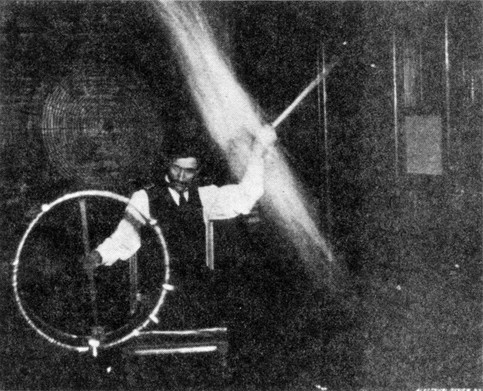
“Science and science fiction meet in Nikola Tesla,” says novelist Samantha Hunt in writer and producer David Grubin’s new documentary TESLA. Until his death at age 86 in 1943, Croatian-born Nikola Tesla had visions–flights of imagination as concrete as the machines which he could draw and as fanciful as the idea of photographing thoughts. One of his earliest and most revolutionary innovations was to improve upon Thomas Edison’s invention of direct current and build a more efficient technology, a motor, to deliver alternating current electricity. “He established the basic framework for electric generation and distribution that drives our economy today,” says scientist Harold Clark in TESLA. After his death, Tesla was credited for the invention of radio.

Tesla received recognition for his advancements in his lifetime. According to an article by Thomas Martin published in Century Illustrated Magazine in 1894, when Tesla was in his 30s, “Mr. Tesla has advanced the opinion, and sustained it by brilliant experiments of startling beauty and grandeur, that light and heat are produced by electrostatic forces acting between charged molecules or atoms.” However, Tesla had a fraught relationship with big business and at times had to work as a ditch-digger and an electrical repairman.
He was also an eccentric. Theodore Waters recounted a performance in 1894 in the Los Angeles Times in which Tesla stood on a dark stage with “a small lamp in his hand and his hand above his head. Rays of unequaled beauty came from the lamp and spread down over the body of the man. The lamp was a simple affair with no wires connecting it with a hidden source of supply. It was as if the lamp of Aladdin had been rubbed and beautiful jewels were gleaming forth.” A Tesla coil, an electric circuit complete with heavy wires coiled in a circle with room to vibrate at radio frequency, which he submerged in oil, was placed below the table in front of which Tesla stood, holding in his other hand the metal end of a light bulb. Tesla’s arm became a conductor of an electric current. As if by magic, the light lit.

In 2005, Columbia Film School graduate Joel O. Shapiro made a Sloan-funded 21-minute narrative film about Tesla. The film, which is included in the Science & Film Teacher’s Guide, focuses on Tesla’s dream of the Wardenclyffe Tower. It was to be a tower which tapped enough energy from the planet that it could transmit wireless power to anyone on earth with a receiving mechanism. It is similar, in concept, to today’s cell phones and GPS technology.
TESLA is executive produced by Mark Samels and will be broadcast on PBS’s THE AMERICAN EXPERIENCE on October 18, 2016 at 9pm, and be available thereafter to stream on PBS’s website. Major funding was provided by the Alfred P. Sloan Foundation, which has been supporting documentaries about science and technology on THE AMERICAN EXPERIENCE for over 20 years.
Director Michael Almereyda, who received Sloan funding for his most recent film EXPERIMENTER, is now making a biopic about Tesla.
FILMMAKERS
PARTNERS
TOPICS